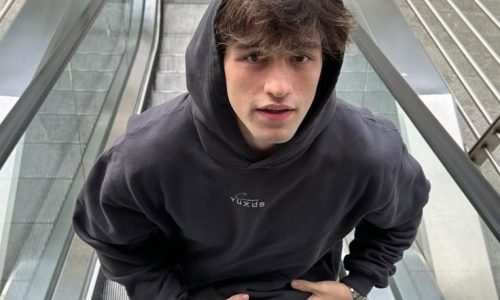
Eco-Edge: The Fashion Movement Leading 2025
Introduction – A World in Motion, Seen Through Fashion’s Lens
In 2025, the global fashion ecosystem is experiencing an energetic transformation. From virtual runways to eco-futurism, from archival revivals to gender-fluid aesthetics, style is evolving at a pace never seen before. What was once defined by cyclical trends has become a multi-layered tapestry of global movements, cultural dialogue, and personal innovation. The traditional idea of “what’s in” has been disrupted. Now, what’s relevant is not only what people wear—but why, how, and with what purpose.
Style today is data-informed, story-driven, and community-powered. The digital age has allowed micro-trends to flourish alongside mega-movements, and the very concept of trend forecasting is being rewritten in real time. As we step further into the second half of the decade, this style radar offers a map—not just of fashion’s most compelling visuals, but of its cultural currents, emotional tone, and evolving soul.
Let us explore the fashion signals defining 2025 and what they reveal about what lies ahead.
Dopamine Dressing Returns With Purposeful Energy
No longer just about feel-good color explosions, the 2025 wave of dopamine dressing is layered with thoughtful intention. Designers are infusing bold hues, expressive silhouettes, and unconventional combinations with emotional resonance. From sunshine yellows and electric blues to chromatic metallics and color-blocked accessories, this movement is about elevating personal mood and spreading collective optimism.
But this isn’t simply about looking bright—it’s about wearing pieces that symbolize joy, resistance, confidence, and hope. In uncertain times, this colorful shift has become a subtle form of protest, reclaiming happiness as an act of power. Expect the continuation of unconventional styling: clashing patterns, oversized layering, and unexpected color theories that create visual stories.
Craftcore Evolves into Cultural Preservation Fashion
What began as a DIY aesthetic during lockdown years has matured into a deeper movement centered around heritage and sustainability. Craftcore in 2025 has gone beyond crochet vests and patchwork jeans—it is now embedded with cultural storytelling, ancestral techniques, and artisanal collaboration.
Designers are working hand-in-hand with indigenous craftspeople, reviving techniques like natural dyeing, hand-weaving, and embroidery passed down through generations. Each piece carries more than texture or color—it holds language, legacy, and identity. The style radar is now tracking garments that serve not only as clothing but as living archives of culture, resistance, and memory.
Quiet Luxury Deepens into “Stealth Sustainability”
Quiet luxury remains influential, but 2025’s version has transcended logo-free cashmere and minimalist tailoring. Now, it signals a more advanced layer: stealth sustainability. These garments don’t just look refined—they’re built with regenerative materials, ethical labor, and modular construction invisible to the naked eye.
Brands are perfecting biodegradable silk blends, seamless tailoring, and timeless pieces engineered for decades of wear. This discreet opulence speaks to a mature consumer who prefers longevity over spectacle, ethics over trends. The quiet luxury buyer in 2025 isn’t showing off wealth—they’re investing in substance with subtle precision.
Gender-Free Fashion Becomes the Baseline
Genderless fashion is no longer experimental—it’s the new normal. Silhouettes are fluid, sizing systems are unisex, and collections are designed without the binary in mind. This isn’t just about men wearing skirts or women in suits—it’s about the total breakdown of gendered expectations in fashion.
In 2025, fashion houses are rethinking everything from pattern making to store layouts to accommodate all bodies and identities. Labels like Telfar, Harris Reed, and Palomo Spain are no longer outliers—they’re leading. Consumers are choosing pieces that resonate with personal truth, not pre-assigned gender. The fashion radar is now tuned into style as self-affirmation, not social constraint.
The Digital-Tactile Merge: Techwear with Soul
Techwear isn’t just utilitarian anymore. In 2025, the sector has merged high-performance gear with storytelling aesthetics. Brands are crafting garments that react to the body, the weather, or even your digital life—but now with softer textures, more emotional depth, and cultural nuance.
Wearable tech may include fabrics that monitor hydration, sleeves that warm up on command, or dresses that sync with smart homes. But they’re wrapped in earthy tones, natural materials, and soft silhouettes. The future is no longer cold and robotic—it’s intelligent, adaptable, and poetic.
New Workwear Reflects Hybrid Lifestyles
The post-pandemic workplace has shifted permanently, and with it, professional attire has been rewritten. Suits in 2025 are unstructured, breathable, and stretch-enabled. Dresses are convertible, trousers have drawstring waists, and blazers function more like cardigans. This new category is made for days that flow between video calls, cafe meetings, and outdoor walks.
The trend radar shows that today’s worker wants polished comfort, pieces that multitask, and fits that transition seamlessly. Labels are responding with collections that mirror the freedom of remote work while maintaining the style codes of professionalism.
Hyperlocal Style Becomes a Global Influence
While global fashion weeks still hold sway, it’s the street style of smaller cities and communities that’s shaping what’s next. Places like Seoul, Lagos, Copenhagen, and Mumbai are bursting with hyperlocal movements rooted in cultural pride and personal remixing.
Thanks to TikTok, Instagram, and digital magazines, these aesthetics are crossing borders instantly. Young creatives in Jakarta are being inspired by Tunisian skate culture, while designers in Barcelona pull from Vietnamese tailoring. The result is a planetary loop of ideas where inspiration flows without hierarchy. Style in 2025 is no longer top-down—it’s everywhere, all at once.
The Archive Renaissance: Past Pieces in the Present Moment
Vintage is not just trendy—it’s necessary. Archive fashion is becoming a pillar of sustainable consumption and creative direction. Shoppers are hunting for early-2000s Jean Paul Gaultier, ‘90s Helmut Lang, or rare Vivienne Westwood—not just for nostalgia, but for uniqueness and climate-aware shopping.
Fashion houses are responding by opening their own archives, offering authenticated vintage, and even reproducing cult pieces. This archival renaissance encourages slower fashion, deeper connection to history, and a collector’s mindset. To be fashionable in 2025 is also to be resourceful.
Conclusion – Fashion’s Future Is Personal, Purposeful, and Plural
As we navigate the ever-changing tides of fashion in 2025, one truth becomes clear: the future of style is deeply individual, conscious, and collaborative. No longer dictated by a handful of elite designers or glossy magazines, trends now emerge from lived experiences, subcultures, digital ecosystems, and heartfelt expression.
What we wear today says more than ever about who we are, what we believe, and how we see the world. From dopamine dressing to heritage craft, from stealth sustainability to gender fluidity, fashion has become a living archive of human evolution.
The style radar doesn’t just scan garments—it reflects shifting values, community stories, and the dreams we’re weaving into fabric. And as we look forward, fashion continues to offer us something far greater than clothes: a way to imagine, shape, and embody the future.



